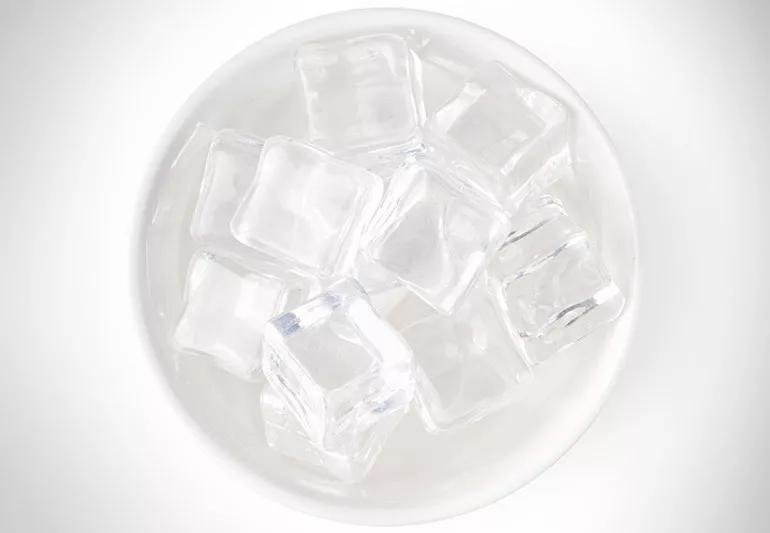Advertisement
This simple trick can seriously reduce puffiness

Icing your face isn’t just for black eyes and bumps on your forehead. In a world of wacky wellness-related tips and tricks, this recent TikTok trend takes it back to basics: facial icing as a means of reducing puffiness.
Advertisement
Cleveland Clinic is a non-profit academic medical center. Advertising on our site helps support our mission. We do not endorse non-Cleveland Clinic products or services. Policy
So does it work? Aesthetician Lori Scarso explains why this old-fashioned skin care method is in the spotlight again — and what it can do for you.
It’s not that deep: Facial icing is exactly what it sounds like, the process of applying ice to your face. Low temps causes blood to rise beneath the surface of the skin, which has a variety of benefits.
Though it can be done at a spa or aesthetician’s office, it’s easy to reap the rewards of simple ice facials at home.
If you wake up feeling puffy or just notice that your skin is especially dull — say, after a night of drinking, eating poorly or not sleeping well — facial icing might be the right morning move for you.
“Everyone knows about the benefits of applying ice to injuries,” Scarso says, “but it does the same for the face.” The cold helps help drain excess fluids from the lymphatic system, which also help decrease facial puffiness
The same lymphatic drainage that reduces overall puffiness can specifically reduce the appearance of a puffy under-eye area. “Gently icing under the eyes can help release fluid buildup, drain toxins and cause a tightening effect,” Scarso says.
Don’t expect a miracle, though. She warns that if your under-eye bags are of the genetic variety (thanks, Mom), facial icing won’t able to work any extra-special magic.
Who needs top-of-the-line highlighter when an ice cube can give you the same glow for free? Icing constricts the blood vessels is your face, which can lessen the appearance of pores and wrinkles and make you look lighter, brighter and more radiant overall.
You don’t need any fancy equipment or expensive products to ice your face. “This is something that everyone can do at home,” Scarso says. For exactly zero dollars, it offers an easily accessible way to tend to your skin care needs.
All you need to ice your face is, well, some ice. But Scarso doesn’t recommend it applying it directly to your face on its own, as it could cause irritation and redness.
Instead, wrap an ice cube in a thin cloth, which will protect the skin on your face and your hands, and begin to lightly massage your face. “Rub the ice around your face in a circular motion,” she advises. “You want constant movement.” Lightly massage the following areas:
Don’t let the ice rest on any portion of your skin for too long, as it could cause that aforementioned irritation and redness — and even frostbite. And do remember to moisturize after icing your face so that your skin doesn’t dry out.
Advertisement
Facial icing is safe for most people, but Scarso says to steer clear under certain circumstances and conditions.
Facial icing is a nice little trick for a natural pick-me-up, but isn’t a cure-all or a long-term fix for skin problems like acne, genetic under-eye bags, wrinkles or other issues.
“You shouldn’t do it more than once a day,” Scarso says. “It’s just a temporary way to get a little wake-up for your skin after a long night or a hard day.”
And remember: No shortcut or quick fix works as well as prevention. To avoid puffy skin altogether, prioritize sleep, hydration and nutrition.
Advertisement
Learn more about our editorial process.
Advertisement

Moisturize often, take oatmeal baths, use Epsom salts and follow a healthy diet to help reduce your symptoms

Adding a little milk to your bath can leave your skin smooth, silky and refreshed

Wear properly fitted shoes, break them in ahead of time and wear moisture-wicking socks

Topical treatments — and even some cosmetic procedures — may help reduce the appearance of this crinkled-paper look

Ferulic acid can help make other antioxidant products more powerful

You’re putting your skin at risk of sunburn and even skin cancer when you pour on the beer

Mineral sunscreens have a heavier texture to create a physical barrier, while chemical sunscreens are lighter and use a chemical reaction to prevent UV damage

Deal with dry skin by preserving your skin’s moisture, using moisturizing products and taking preventive action

Focus on your body’s metabolic set point by eating healthy foods, making exercise a part of your routine and reducing stress

PFAS chemicals may make life easier — but they aren’t always so easy on the human body

While there’s little risk in trying this hair care treatment, there isn’t much science to back up the claims